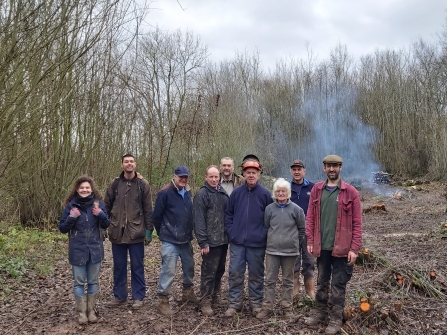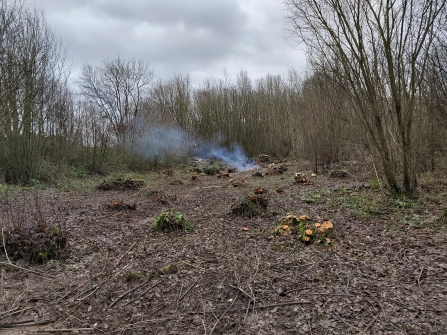The Wednesday and Thursday work parties, have been busy managing Upper Swingley Wood, a small woodland reserve in the north east of our area. The Wildlife Trust have been continuing the tradition of coppicing here, which records show, has been carried out uninterrupted for over 200 years. It is likely Upper Swingley is a small fragment of a much older woodland, given the species you might see here in the spring include moschatel, herb paris, early purple orchid, yellow archangel and twayblade – all indicators of ancient woodland.
Coppicing at Upper Swingley Nature Reserve

Thursday Volunteer Work Party at Swingley
Coppicing allows much more light onto the woodland floor and triggers the germination of the latent seedbank of flowers, which then encourages other species like bees and butteflies. The regenerating scrubby habitat will attract birds like warblers, to nest there. The coppicing we have done this year (and will continue to do over the next three years), has been carried out along swathe down the central third of the reserve, following a stream which runs the length of the site. This helps to somewhat buffer the coppice, from surrounding farmland and increases the amount of woodland edge habitat. By the end of our 5-year stewardship scheme, we will have coppiced one block each year, along the entire length of the site.

In addition to our regular cohorts of midweek volunteers, we have welcomed staff members Gemma, Kelly and Lara from Westons cider, who are one of our corporate partners with them helping us out over three days. We also had Frances from the Wildlife Trust out and capturing some media - see video below!
Coppicing at Upper Swingley: Lewis Goldwater (https://youtu.be/LxrzSauoW8c)
Coppicing at Upper Swingley: Lewis Goldwater






